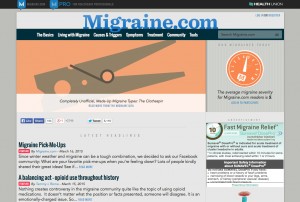Pharma marketers spend much time and effort developing and improving ways to support patients in their specific disease areas. This is important work. An estimated 150 million people are living with at least one chronic condition in 2015, and by 2030 the number is estimated to grow to 171 million.[1]
However, this effort does not take into account an important reality: many patients are dealing with more than one condition at the same time. This means that current efforts may be too narrow to offer the full breadth of support that your consumers need every day. Almost one in three Americans has multiple chronic conditions (MCCs).[2] Specifically, about 27.9% of adults aged 45 to 64 and more than half (51.6%) of adults 65 and over suffer from two or more chronic conditions, with the major burden of MCCs on older Americans aged 65 and over.[3] As the baby boomer generation continues to age, the problem is expected to increase.
The CDC reports that the most prevalent combination of two chronic conditions in the United States is hypertension and arthritis, and for people who have the most common combination of three diseases, they add diabetes to that duo. Other common chronic conditions include high cholesterol, heart disease, cancer, depression, substance use disorders, asthma, HIV/AIDS, and dementia. But what makes this challenge so pervasive is that even though these diseases are most common, there are many others. Each person is unique, and so are the health challenges they face every day.
The price of living with MCCs is steep: 71 cents of every dollar of US healthcare spending goes to treating people with MCCs, according to the US Department of Health and Human Services Agency for Healthcare Research and Quality[4] (see the details in a great infographic here). And these are definitely your customers. People with three chronic conditions fill an average of 23 prescriptions per year, and that number jumps to 50 prescriptions per year for people with five chronic conditions.
What can we do to provide information and support for people with multiple conditions? It is a conceptual, logistical, and IT challenge to be sure, and one that pharma does not face alone: government, nonprofit groups, and other health organizations are also structured to provide support that is segmented:
- The CDC provides a wealth of information and resources for patients on its website, but all are segmented by disease: http://www.cdc.gov/features/diseasesconditions.html
- The nonprofit National Council on Patient Information and Education (NCPIE) recently launched a 10-step adherence program called Accelerating Progress in Prescription Medicine Adherence: The Adherence Action Agenda as part of its campaign platform at www.bemedicinesmart.org. Though the resource gallery includes links and resources for the most common, costly, and preventable of all health problems in the US, there is not one place where patients can turn to address all of their conditions and symptoms.
- Data aggregators, sites you probably know that are set up for patients to log their health data to be combined with others and inform clinical research, are set up for patients to track their diagnosis and treatment for one disease/condition at a time.
How can pharma marketers face this challenge to help their patient consumers? It’s a multi-faceted problem, but here are some starting points to open the discussion:
- Stop focusing on just disease and focus instead on the tools of coping, juggling and living. Not only do most people have more than one medical condition, but everyone is trying to get through each day successfully managing their health along with their relationships, their jobs, and more.
- Engage with patients the way patients want to engage (not the way pharma prefers). It’s not about controlling the message – instead, put yourselves in your customer’s shoes, work to deeply understand their journey, and see how you can help.
- Provide peer-to-peer support. When it comes to their health, patients want to hear from people that they feel are like them. Because it is likely that others are dealing with multiple conditions, peer support that connects patients with real people who have volunteered to share their experiences and provide support can make a significant impact on disease management. Helping to connect people so they can share what has worked for them in their journey means they can learn from and help each other.
The takeaway here is that the convergence of social media, empowered patients, and The Internet of Things has brought us to a point where consumers expect the tools they rely on to blend seamlessly into their lives, providing the information and support they need, the way they need it. Pharma needs to help patients navigate the complexities of their own health in all aspects, not just around one drug.
References:
[1]Wu, S. Green, A. “A Projection of Chronic Illness and cost inflation 2000”
[2] U.S Department of Health and Human Services Agency for Healthcare Research and Quality, “The Importance of Investing in Care for People with Multiple Chronic Conditions,” http://www.ahrq.gov/professionals/prevention-chronic-care/decision/mcc/mcc_infographic.pdf
[3] National Council on Patient Information and Education, “Chronic Conditions 101,” http://www.bemedicinesmart.org/chronic.html
[4] U.S Department of Health and Human Services Agency for Healthcare Research and Quality, “The Importance of Investing in Care for People with Multiple Chronic Conditions,” http://www.ahrq.gov/professionals/prevention-chronic-care/decision/mcc/mcc_infographic.pdf




